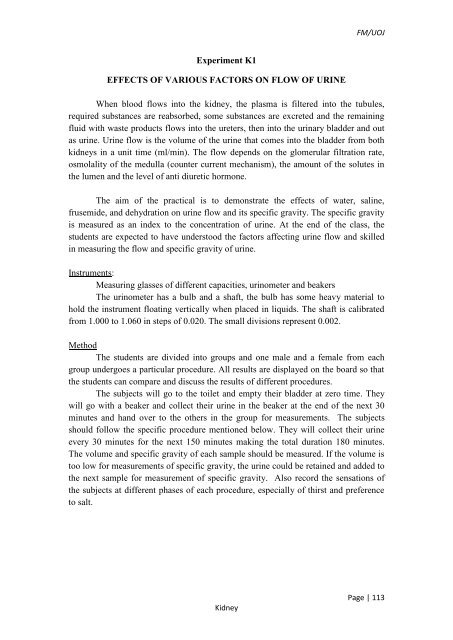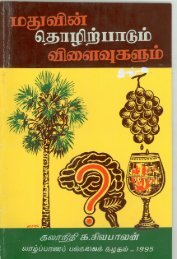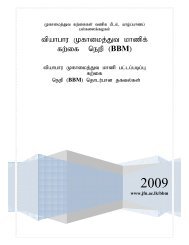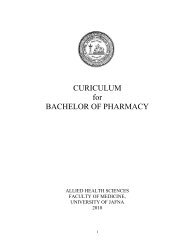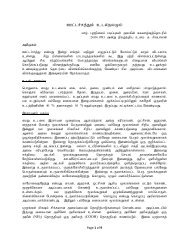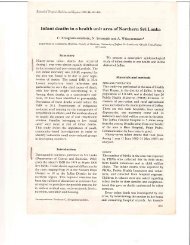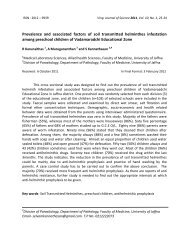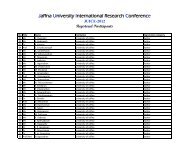MANUAL PHYSIOLOGY PRACTICAL - Repository:The Medical ...
MANUAL PHYSIOLOGY PRACTICAL - Repository:The Medical ...
MANUAL PHYSIOLOGY PRACTICAL - Repository:The Medical ...
Create successful ePaper yourself
Turn your PDF publications into a flip-book with our unique Google optimized e-Paper software.
FM/UOJ<br />
Experiment K1<br />
EFFECTS OF VARIOUS FACTORS ON FLOW OF URINE<br />
When blood flows into the kidney, the plasma is filtered into the tubules,<br />
required substances are reabsorbed, some substances are excreted and the remaining<br />
fluid with waste products flows into the ureters, then into the urinary bladder and out<br />
as urine. Urine flow is the volume of the urine that comes into the bladder from both<br />
kidneys in a unit time (ml/min). <strong>The</strong> flow depends on the glomerular filtration rate,<br />
osmolality of the medulla (counter current mechanism), the amount of the solutes in<br />
the lumen and the level of anti diuretic hormone.<br />
<strong>The</strong> aim of the practical is to demonstrate the effects of water, saline,<br />
frusemide, and dehydration on urine flow and its specific gravity. <strong>The</strong> specific gravity<br />
is measured as an index to the concentration of urine. At the end of the class, the<br />
students are expected to have understood the factors affecting urine flow and skilled<br />
in measuring the flow and specific gravity of urine.<br />
Instruments:<br />
Measuring glasses of different capacities, urinometer and beakers<br />
<strong>The</strong> urinometer has a bulb and a shaft, the bulb has some heavy material to<br />
hold the instrument floating vertically when placed in liquids. <strong>The</strong> shaft is calibrated<br />
from 1.000 to 1.060 in steps of 0.020. <strong>The</strong> small divisions represent 0.002.<br />
Method<br />
<strong>The</strong> students are divided into groups and one male and a female from each<br />
group undergoes a particular procedure. All results are displayed on the board so that<br />
the students can compare and discuss the results of different procedures.<br />
<strong>The</strong> subjects will go to the toilet and empty their bladder at zero time. <strong>The</strong>y<br />
will go with a beaker and collect their urine in the beaker at the end of the next 30<br />
minutes and hand over to the others in the group for measurements. <strong>The</strong> subjects<br />
should follow the specific procedure mentioned below. <strong>The</strong>y will collect their urine<br />
every 30 minutes for the next 150 minutes making the total duration 180 minutes.<br />
<strong>The</strong> volume and specific gravity of each sample should be measured. If the volume is<br />
too low for measurements of specific gravity, the urine could be retained and added to<br />
the next sample for measurement of specific gravity. Also record the sensations of<br />
the subjects at different phases of each procedure, especially of thirst and preference<br />
to salt.<br />
Kidney<br />
Page | 113


